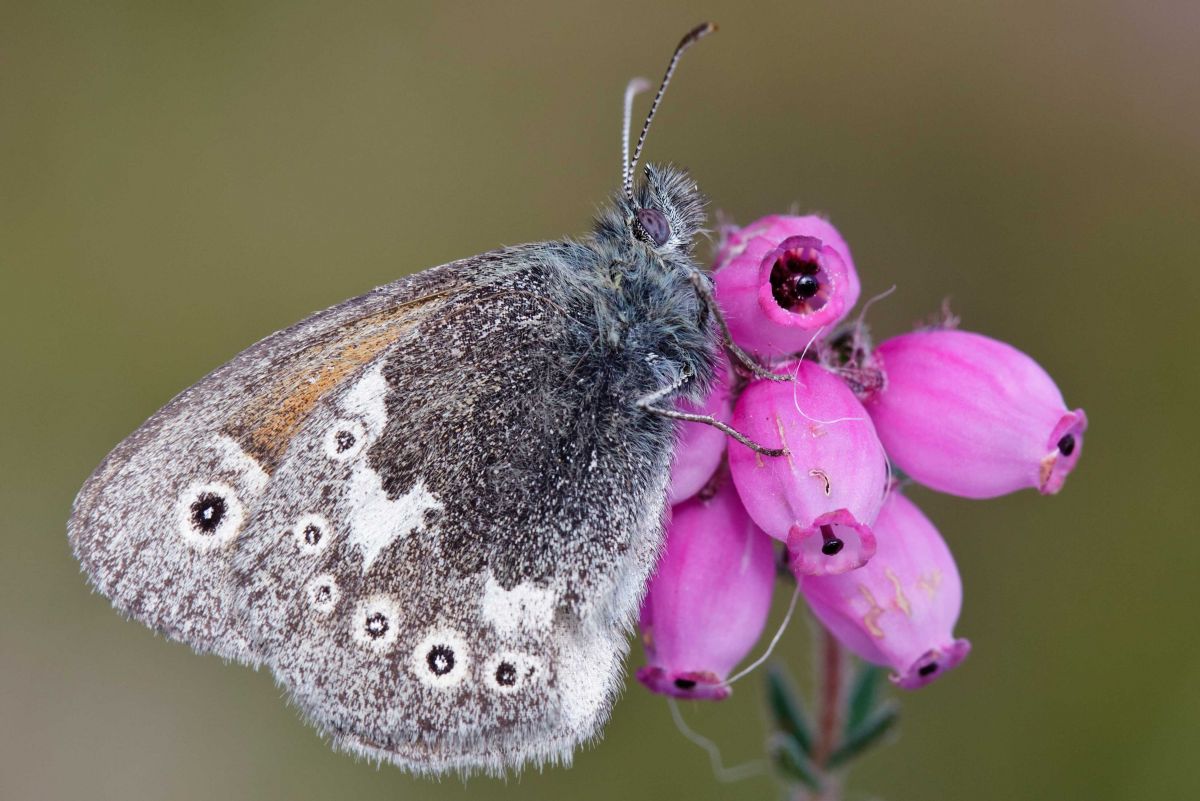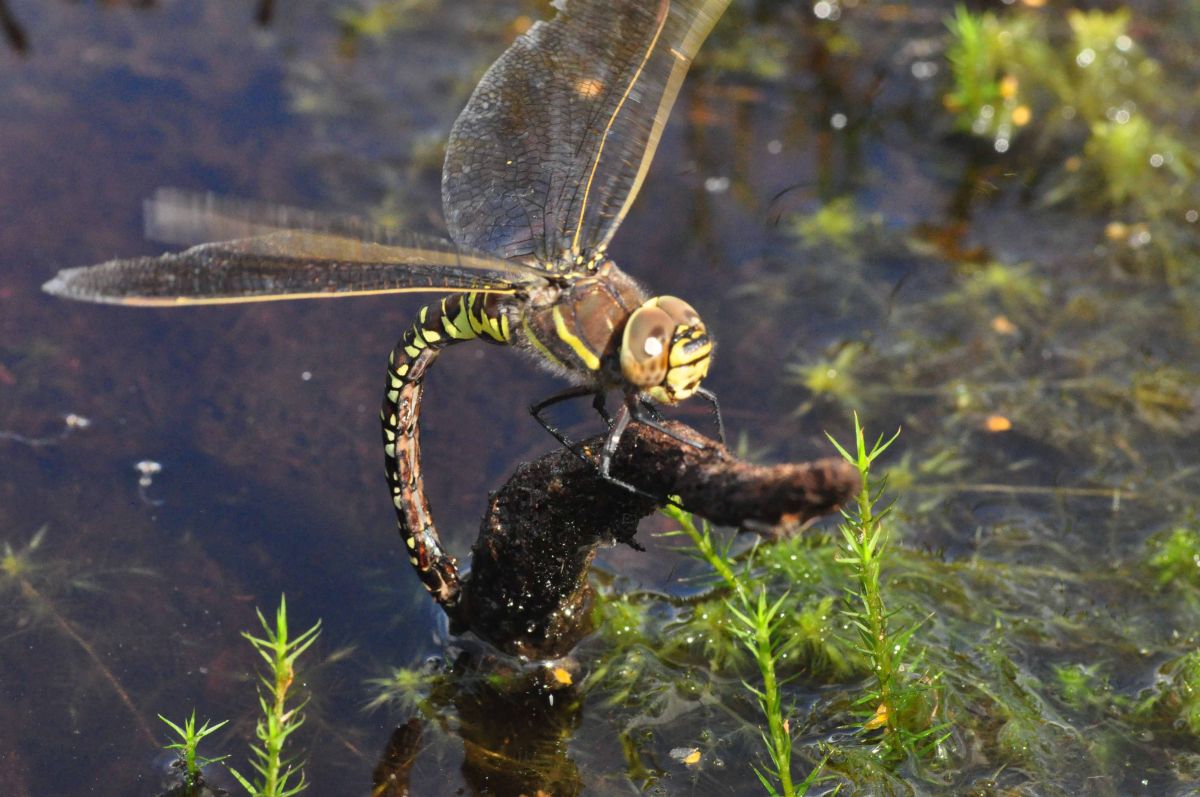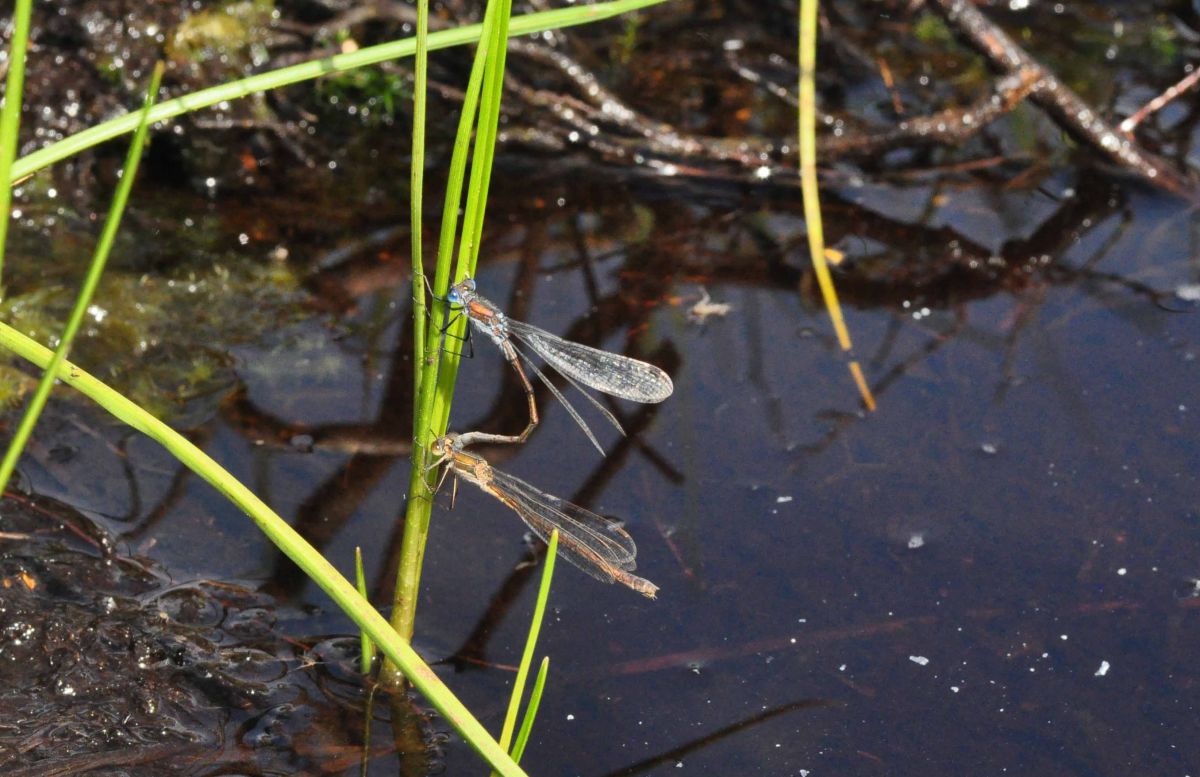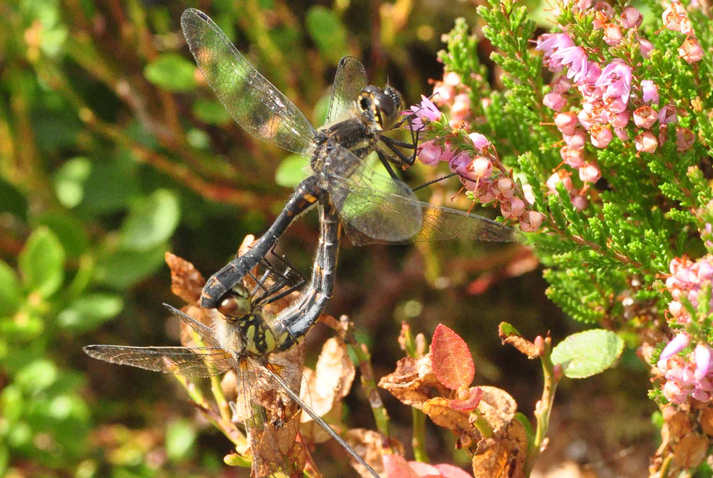A Scottish wildlife reserve, where one of the country’s rarest butterflies can be found, is now home to a number of beautiful dragonfly species, Butterfly Conservation (BC) can reveal.
Wester Moss in Fallin near Stirling is managed by the wildlife charity and owned by Stirling Council.
The wildlife reserve is an established site for the declining large heath butterfly (image on right by Alistair Graham), but now at least five species of dragonfly have been confirmed as breeding there too.

David Hill from BC Scotland said: “It’s been a great thrill to see the dragonflies arrive and set up home here as there were no records of breeding dragonflies before this year.
“We’ve seen five species hunting and breeding over the Moss, including the common hawker, common darter, black darter, emerald damselfly and blue-tailed damselfly. We’ve also had one sighting of a large red damselfly.”
The colourful arrivals have been seen in the last few weeks. Their emergence follows the completion of peatland restoration work carried out to protect the large heath and to stop the land at Wester Moss from drying up.



Images L-R: Common hawker, emerald damselflies, black darters - all Paul Kirkland, Butterfly Conservation
BC Scotland’s ‘Bog Squad’ team - a volunteer task force created to carry out rehabilitation works on damaged peat bogs - have helped create new freshwater pools on the wildlife reserve to maintain the damp and boggy lowland habitat which the butterfly lives and breeds on.
Lowland raised bog is now very scarce and in Scotland nearly 90% of its former area has been lost.
Wester Moss is a Site of Special Scientific Interest (SSSI) and maintaining it is crucial to the survival of the large heath population found there.
A programme of work has been underway for several years to protect the wildlife found at the site and to make the Moss wetter, including the installation of a 500 metre bund and the construction of numerous dams across old drainage ditches.
The work at the wildlife reserve has been part-funded by the Inner Forth Landscape Initiative and the LIFE+ financial instrument of the European Community.
David Hill, Project Officer of the Bog Squad, added: “The Moss has been drying out, but all the recent work we have done in conjunction with Stirling Council to make the land wetter appears to be paying off - and not only for the butterflies and dragonflies.
“A wetter Wester Moss will also provide more ‘ecosystem services’, such as carbon and water storage and flood prevention.”
Wester Moss is also home to the green hairstreak butterfly, lunar hornet and wood tiger moths and rare plants, such as bog rosemary.
Paul Kirkland
Director of Butterfly Conservation Scotland










